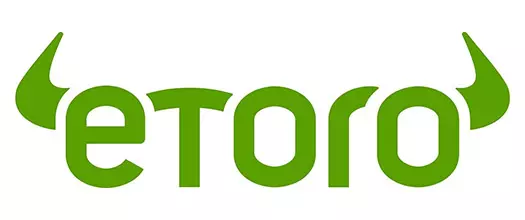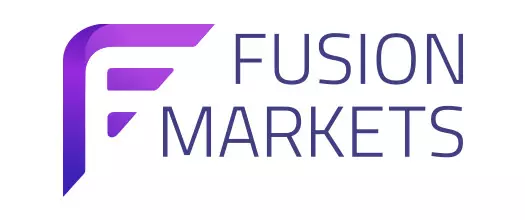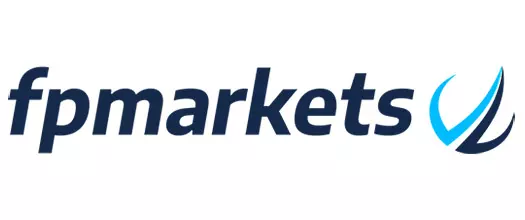- Jump to:
- Main features of the best 1:50 Leverage Forex brokers
- What Is Financial Leverage
- How Does It Work
- Is It Suitable for You
- Regulation
- Initial Capital
- Trading Strategy
- Advantages
- Risks
For many forex enthusiasts, leverage is a critical component of their trading strategy. If you are one such trader and your preferred leverage ratio is 1:50, feel free to check out our ranking of the top forex brokers offering leverage of up to 1:50.
 Plus500 USThis content applies only to Plus500 US and clients from the United States. Trading futures involves the risk of loss.
Plus500 USThis content applies only to Plus500 US and clients from the United States. Trading futures involves the risk of loss. eToro61% of retail investor accounts lose money
eToro61% of retail investor accounts lose money Fusion Markets74-89% of retail's CFD accounts lose money
Fusion Markets74-89% of retail's CFD accounts lose money FP Markets73.85% of retail investor accounts lose money
FP Markets73.85% of retail investor accounts lose money Global Prime74-89% of retail CFD accounts lose money
Global Prime74-89% of retail CFD accounts lose money Pepperstone75.5% of retail investor accounts lose money
Pepperstone75.5% of retail investor accounts lose money
Below, you can find a comparison table of FX brokerages that offer 1:50 leverage. We have ranked them based on several factors, including regulation, spreads and commissions, Trustpilot rating, trading instruments, trading platforms, deposit solutions and withdrawal methods.
Our team has thoroughly evaluated all brokers listed below using TradingPedia’s exclusive methodology.
Main features of the best 1:50 leverage forex brokers
- Brand
- Trading platforms
- Minimum deposit
- Regulations
- Trading instruments
- Spreads
- Leverage for Forex CFDs
- Leverage for Crypto CFDs
- Leverage for Indices CFDs
- Deposit methods
- Withdrawal Methods
- Commission per Lot
- Contact details
Leverage is one of the fundamental concepts each aspiring forex trader needs to understand. It determines how much money they can earn or lose when trading, depending on their strategy and the market movements. Leverage trading is an option offered by many brokers, though the exact ratio limits will vary depending on the broker’s policy, its licensing and the instruments you plan to trade.
But what is leverage exactly? The term is widely used in finance, and it refers to various techniques that use borrowed funds or debt, rather than own capital, to make an investment.
When trading with leverage, one has the opportunity to trade volumes larger than would be possible with their own capital. In short, by taking advantage of the leverage offered by forex brokers, traders borrow funds from them to multiply the potential profits from a successful transaction.
This may sound like an attractive offer because successful trades can result in substantial profits. However, higher leverage constitutes a higher risk since the potential losses of a given position are also amplified. This is why traders should carefully select a forex broker and always pay close attention to the conditions they are offered.
What is financial leverage?
As mentioned above, leverage can refer to several different methods for obtaining assets using debt rather than fresh capital, thereby avoiding the use of excessive equity. It is among the most commonly used tools in online trading.
To better understand how financial leverage is used in trading, we first need to understand its basics. Most forex and CFD brokers are broker-dealers, acting as intermediaries between their clients and the market. When traders open a leveraged position, they receive leverage from their brokers. In other words, they borrow capital many times higher than their own funds. The amount of leverage is displayed as the ratio of the clients’ funds to the capital borrowed from the broker: 1:2, 1:5, 1:10, 1:50 or 1:100.
With leverage of 1:50 and an investment of only $100, a trader can open a position worth $5,000. There are two main potential outcomes:
- The trade turns a profit: If this happens, the money is not necessarily paid by the broker. Instead, it comes from the counterparty in the trade, which could be another individual, a bank or the broker if we are talking about a market maker who did not pass the trader’s order to another party.
- The trade ends in a loss: If the trader loses, the lost funds are debited from their account balance.
As you can see, non-market-maker brokers simply act as intermediaries in the trade. In any case, 1:50 leverage amplifies both profits and losses by a factor of 50 compared to profits/losses resulting from trading without leverage.
How does leverage work in forex?
In forex trading, leverage works in a straightforward way, and those familiar with leveraging when trading other assets will find little that is unique to its use in the foreign exchange market. Still, it should be mentioned that, when it comes to forex, traders prefer much higher leverage.
For example, European regulators mandate that retail traders be granted access to leverage no higher than 1:30, while individual equities can only be traded with leverage of up to 1:5.
The foreign exchange market is the largest market in the world in terms of trading volume, and typical transactions in the interbank market range from hundreds of thousands to millions of dollars. In April 2019, trading in the forex markets averaged $6.6 trillion per day, according to the Bank for International Settlements. The participants in these trades are mostly banks, international corporations and hedge funds, which suggests that the sizeable transaction volumes are simply too large for most private retail investors.
At the same time, FX trading has become accessible to individuals over the past few decades due to the emergence of fully digital trading systems and real-time online platforms. To trade on the decentralised forex market, retail traders simply register with a forex broker who transmits their orders to the market. The use of leverage, however, is a fundamental part of this process since it allows individuals to trade substantial volumes while providing only a portion of the transaction value.
The process is quite simple. Forex brokers require a certain deposit to provide their clients with leverage of 10, 50 or 100 times their capital. The deposit is referred to as ‘required margin’, and its purpose is to cover potential losses in the event of a failure.
Leverage enables the client to execute transactions far larger than they could normally afford. So, for instance, if you are using the services of a broker with leverage of 1:50, you will be required to invest only $2,000 to open a position worth $100,000. Thus, the margin requirement is $2,000, or 2% of the total value of the transaction.
If the trade goes well, the profit is based on the total value, which means that traders can realistically earn several thousand dollars with a deposit of $2,000. However, if the trade is not successful, the client will lose the same amount as a result of the leverage. This is why leverage is often described as a double-edged sword – it can multiply both profits and losses.
Is 1:50 leverage suitable for you?
Deciding the specific level of leverage to use in currency trading can be tricky. Several important factors should be considered.
First and foremost, you will need to check whether 1:50 is even available to you. European brokers, for example, cap retail leverage at ratios lower than 1:50, with the highest available option being 1:30 (major forex pairs). Thus, if you do not plan on becoming a professional trader or opening an account at an offshore brokerage, you will not be able to use leverage of 1:50.
If you do have access to 1:50, you will need to consider your broader understanding of the financial markets and your skill when determining whether this leverage ratio is right for you. If you plan on trading forex but are inexperienced in the FX market, for example, it is wise to stick to lower leverage. If you are a seasoned trader, on the other hand, 1:50 leverage may be suitable.
Other factors you must consider include your starting capital, your risk tolerance and whether 1:50 leverage is appropriate for your trading style and strategy. Day traders, for example, may use leverage of 1:50 or even higher to capitalise on small price fluctuations in currencies.
Regulation
In the past, forex traders across the globe could freely use leverage up to 1:1000. In recent years, changes in national and international regulation have limited the maximum leverage for retail traders residing in various jurisdictions.
Financial regulators, most notably in the United States and Europe, have introduced various measures to increase customer protection in the online trading sphere, particularly when high-risk products like CFDs and other derivatives are concerned.
The maximum allowed leverage in the US, for instance, is 1:50, while retail traders in the EU can use leverage of up to 1:30 on major pairs. The rest of the restrictions introduced by the European Securities and Markets Authority (ESMA) are as follows:
- Forex majors: 1:30
- Non-major forex pairs, gold, major indices: 1:20
- Commodities besides gold, non-major indices: 1:10
- Individual equities: 1:5
- Cryptocurrencies: 1:2
Initial capital
Many forex traders believe that, to make the most of their small deposits, they should use the maximum leverage offered. This is a common misconception that often results in the loss of one’s entire trading capital. Various brokers offer micro accounts to retail traders in which the minimum deposit requirement is only $50. Usually, such accounts are intended for less-experienced traders who cannot afford to spend thousands when trading currencies.
Of course, a standard lot of 100,000 currency units will then be out of reach for such clients, which is why brokers may allow them to open positions with a 0.01 lot, worth $1,000. With leverage of up to 1:50, the trader can control volumes of $2,500 ($50 x 50 = $2,500).
Using even lower leverage of 1:20 would be enough to open such a trade. Those who opt for a leverage ratio of 1:50, however, will be maximising the potential profits from the transaction. At the same time, they will be trading at the highest possible risk.
Trading strategy
There are numerous types of trading strategies developed for buying and selling currency pairs. Moreover, these strategies can be customised, and many traders create their own techniques based on fundamental or technical analysis. One of the most important things traders should remember is that the longer they plan to keep a position open, the lower the leverage they should use.
This is why leverage of 1:50, which is quite high for novices, is preferred by day traders and scalpers. They usually keep multiple positions open, but for a very short time (mere seconds in the case of scalping), which allows them to obtain the maximum profits.
Advantages of 1:50 leverage in forex
Leverage of 1:50 can be a wonderful tool for boosting one’s potential in forex trading. It comes with a few advantages, and the first thing worth mentioning is that such relatively high leverage allows retail traders with mini and micro accounts to trade large volumes on the foreign exchange market.
Another significant benefit of using 1:50 leverage is how it greatly amplifies the amount of money one can accumulate. Of course, successful leveraged trading does require a combination of risk-management techniques, a good trading strategy and a deep understanding of the market, but it can be a powerful tool in the right hands.
Risks of using 1:50 leverage
While 1:50 leverage in forex trading has its advantages, this option is also linked with certain risks. First and foremost, you expose yourself to a higher risk of incurring major losses when using leverage of this calibre. Even small market movements may result in you losing more than you initially deposited into your account. This is why risk-management tools such as stop-losses and negative balance protection are crucial.
Moreover, depending on where they reside, some individuals who plan on trading with 1:50 leverage may be forced to use brokers not licensed by their local financial regulator. They therefore risk becoming victims of fraud or unfair trading practices if they fail to find a reputable broker.
Even if you stick to brands with licences from international regulators, you may not be entitled to perks such as negative balance protection. Thus, anyone considering this route should carefully weigh the risks, ensure they pick a broker that holds a licence from another reputable supervisory entity, and be prepared to forgo certain protections.








